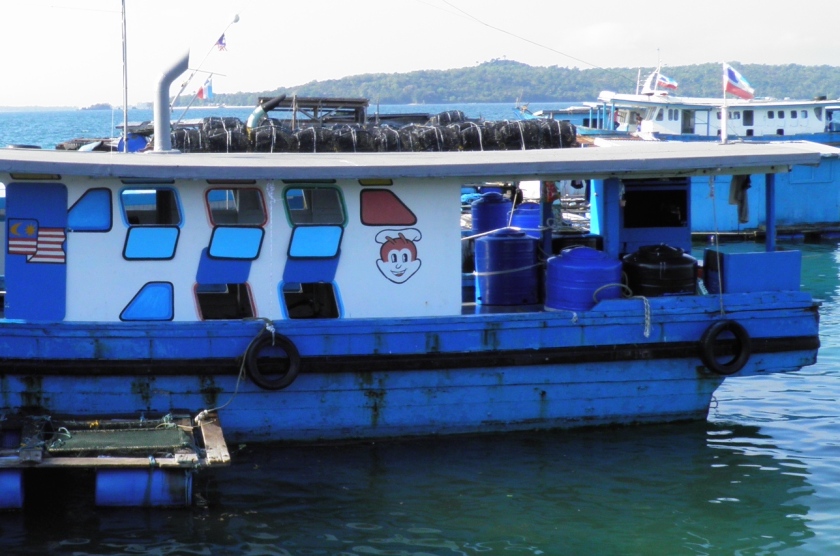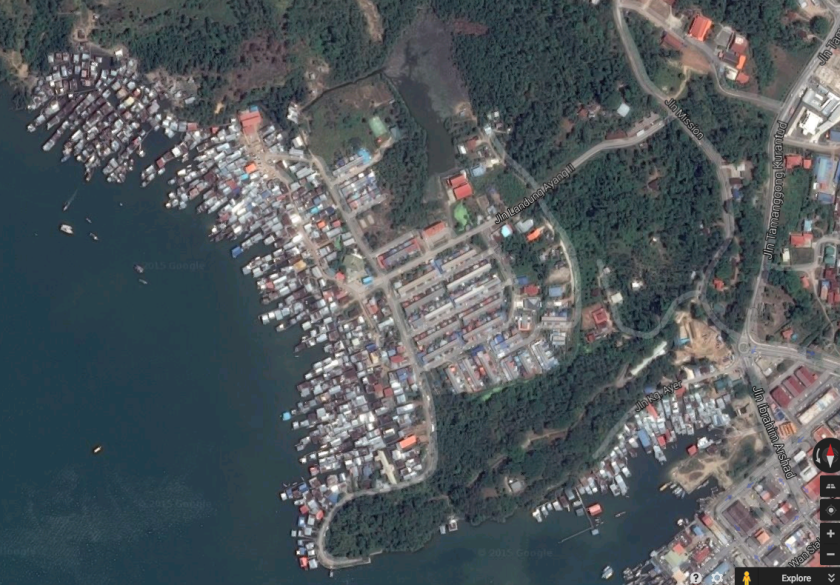Continuing on from my last post, the closest settlement of any size to the Tip of Borneo is Kudat, a town of modest charms.

Difficult to imagine, but this place was once the capital of North Borneo, indeed the first capital, established in 1881. K.G. Tregonning, in his book Under Chartered Company Rule writes of Kudat:
Great hopes were held of it … These high hopes did not eventuate…A small town grew there, but it was always a sleepy hollow and in 1883 (the capital) moved to bustling Sandakan.
Sleepy hollow is probably still a fair description. There are signs of life around the fish and vegetable market but otherwise this town remains pretty sleep-inducing (but maybe I’m being unfair).

One of the reasons why Kudat and the surrounding area never took off under British North Borneo (Chartered) Company (BNBCC) rule was due to a lack of workers. The indigenous Rungus people were far too smart to take on the back-breaking hard labour that the British had in mind. BNBCC tried importing Hakka workers from southern China and offered them free passage, tools and plots of land. This was partly successful and many went on to establish coconut and other plantations but others preferred to open shops.

Less well-remembered these days were attempts by the British to bring in Filipino workers and, in 1892, Philippine national hero Jose Rizal visited Sandakan to discuss establishing a Filipino rice-growing colony in Borneo of some 5,000 families. Due to opposition from the Spanish authorities in Manila and other reasons this proposal never came to fruition.

Rizal’s scheme might have failed but today Filipinos are in Sabah in vast numbers – between 800,000 and 1.4 million depending on whom you listen to. Many of these are undocumented (illegal) migrants who arrived by short boat trips from the southernmost Philippine islands which are only a stone’s throw away.

Many of these illegals have settled in water villages (ramshackle huts on stilts above the sea) which cling to the coasts of Sabah like iron filings to a magnet.
I digress. What other attractions are there in Kudat which I can tell you about?

There is a golf club said to be oldest in Borneo, there’s a clock tower, a fish market and the Esplanade where seafood restaurants attract the locals in the evening.

On the outskirts of town is the airport, built on the old airfield which was constructed by the Japanese during WWII using forced labour from Java and locally. The airfield was heavily bombed by the Americans towards the end of the war.

About 11km north of Kudat town is Bak Bak beach. It is not great for sand but has some interesting rock formations to explore.

Kudat Town is nice and peaceful and the people are friendly but if I were to return to this corner of Malaysia again I would concentrate on the Tip of Borneo and Simpang Mengayau beach.

